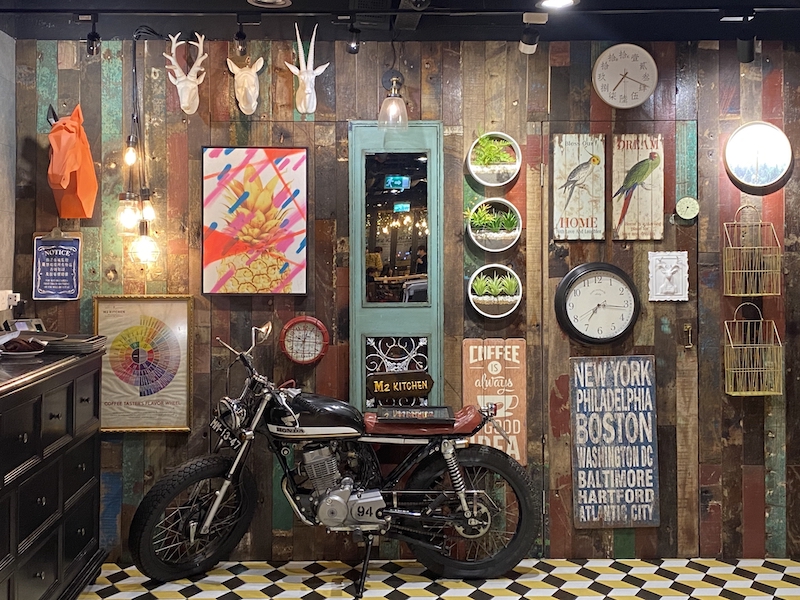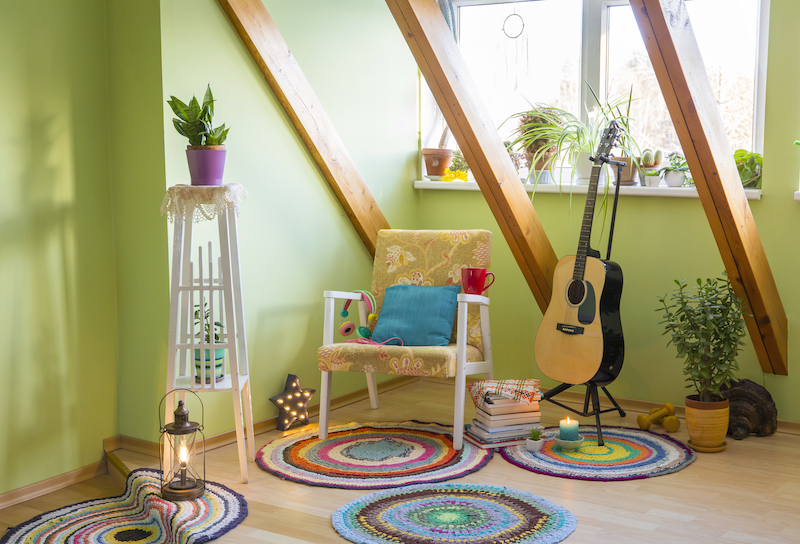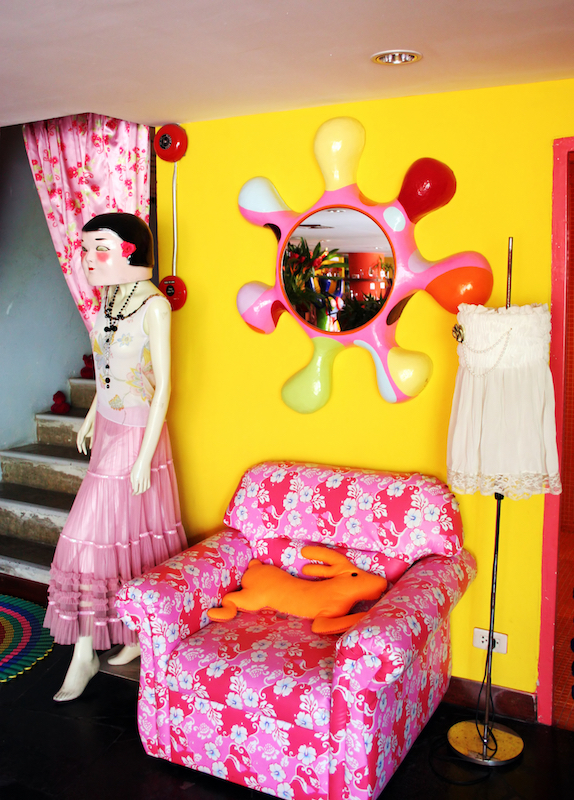
Enter maximalism
For those who’ve been a bit starved for interiors teeming with color and pattern, meet your new best friend. Experts think it’s no coincidence that maximalism started trending during the pandemic. While being quarantined at home, people have been inclined to decorate their homes in a way that makes them feel good and that reminds them of special memories, hence the shift to maximalism.
To look at a maximalist home is to get a sense of what the inside of a person’s brain might look like. You’ll likely encounter the places they’ve visited, their heritage, the random objects they’ve amassed over a lifetime. You’ll see the kind of details that lend a “cozy” factor to an interior, which makes sense when considering that people have been spending more time at home.
Make no mistake, though. Maximalism isn’t about filling every square inch in your home with stuff, hoarding items and overstuffing rooms. It is more about the art of combining colors, prints, and eclectic embellishments. While minimalism is generally thought to be serene and quiet, maximalism is a more vocal style, composed of repetition, mixed patterns, saturated colors, intricate graphic details, and excessive, one-of-a-kind possessions and excessive but curated collections. Maximalism encourages utilizing space in the boldest, most ornate way possible, reminiscent of the stately English home interiors. However, the bold colors and modern accents are what updates maximalist style and makes it modern.

Elements of maximalism
When maxing out your home style, keep in mind that it’s all about you and what makes you unique. It’s entirely more personal than minimalism. As people, we are more than just one thing; we’re at once wonderfully complicated and multifaceted, so our home décor can reflect just that. This style lets your personality and experiences shine through much more effortlessly than in a minimalist space. Some key characteristics of maximalism to keep in mind are:
- Layering
- Repetitive patterns in prints such as florals, abstract, and animal prints
- Rich, bold colors
- Unique statement pieces
- Mixing and matching of textures and colors
- Multiples of items like books, statues, artworks etc.
- Blending of styles—oftentimes but not limited to classic, eclectic, and boho
Experts mention that combining rugs, wallpapers, paintings, and photos can be a great start for curating a maximalist room. Add furniture in different patterns and colors—with each layer sharing the story of your home or the people who occupy the space and filling it with the things you love in a way that can make you happy. When your home is full of all the things that you like, it can boost your mood, make you happier, and provide lots of different stimuli to let your eye wander around the space.

How to achieve the look you want
The best way to adopt the more-is-more trend is to start slow. Adding color, layering patterns, and displaying sentimental pieces of decor is a good place to begin. Perhaps start with books, throw cushions, and plants. Then select a favorite object to put on top of your stack of books. The idea is to add a few pieces at a time, ensuring that colors, textures, and patterns all work together and not against one another.
If your space is small, then layering as opposed to spreading will be required. This means that the pieces you choose need to play off one another. Select items that have similar patterns or shapes to create a sense of cohesion. For instance, your couch and your bookshelf might both have rounded edges, or you can pick pillows that match the pattern on your rug. If you already own a lot of extra accessories, consider filling a bookcase to create a sense of order.
In a room with a stone or brick wall and a sleek wood floor, an exciting mix of mismatched seating will enhance the eclectic vibe. To anchor the space, place a patterned rug to pull the array of colors together. Consider covering one of the walls in a mixture of meaningful art or photographs that tell a family story or a story about your travels.
Any bright, stark white room can set the stage for an explosion of color and pattern. Select curtains, rugs, and accent pillows that each feature a distinct pattern, utilizing three mainstays to blend them beautifully together: scale—choose items that each feature a different size of the same motif; color—choose pieces that feature the same hues in equal intensity; offset the bold patterns with solid color—for example, put bold curtains against the white wall and rugs and pillows up against solid color or metallic furnishings.
Adding wallpaper, curtains, and decorative accessories in a rainbow of hues and motifs can help you max out your current decor. If you already have a room filled mostly with neutral-hued furniture, bring in some floral print curtains that burst in shades of red, green, pink, and yellow to draw the eyes across the room. On the wall behind the sofa, put some blue and white pagoda-patterned wallpaper (or some other wildly delicious pattern that sits in stunning contrast from the other prints and textures in the room). Then use luxurious metallic finishes and colorful decorative pillows help to connect the dots between the extreme prints.
Dressing up your walls and floors (and ceilings) may be the most fun way to rock the more is more trend. Nothing says maximalism like chinoiserie wallpaper on your dining room ceiling. Cover a wall (literally) with your favorite things, including treasured photos or mismatched art. Place little objects from your collection of travels or that tell the story of your work history or some other fascinating piece of you throughout the room, taking care to curate and arrange them in a way that appeals to your eyes and strums your heartstrings. Put animal prints, such as leopard and snake, on floors or as tablecloths, to serve as neutral bases for a maximalist space. The colors of the prints themselves aren’t over the top, so mixing these patterns can create a maximalist feeling in the room that isn’t too obnoxious or noisy.
Keep in mind that even maximalist spaces need to have some negative space, which can help ensure the room doesn’t feel too busy. You can create negative space by leaving some parts of the walls blank, by having open space on shelves, or by making sure flooring is visible under a rug.
Now is the time to mix and match to your heart’s content and allow your space to reflect who you are and how you’ve lived and experienced your life. And make sure to relish and savor in it for as long as you can because you never know what trend will be right around the corner.



